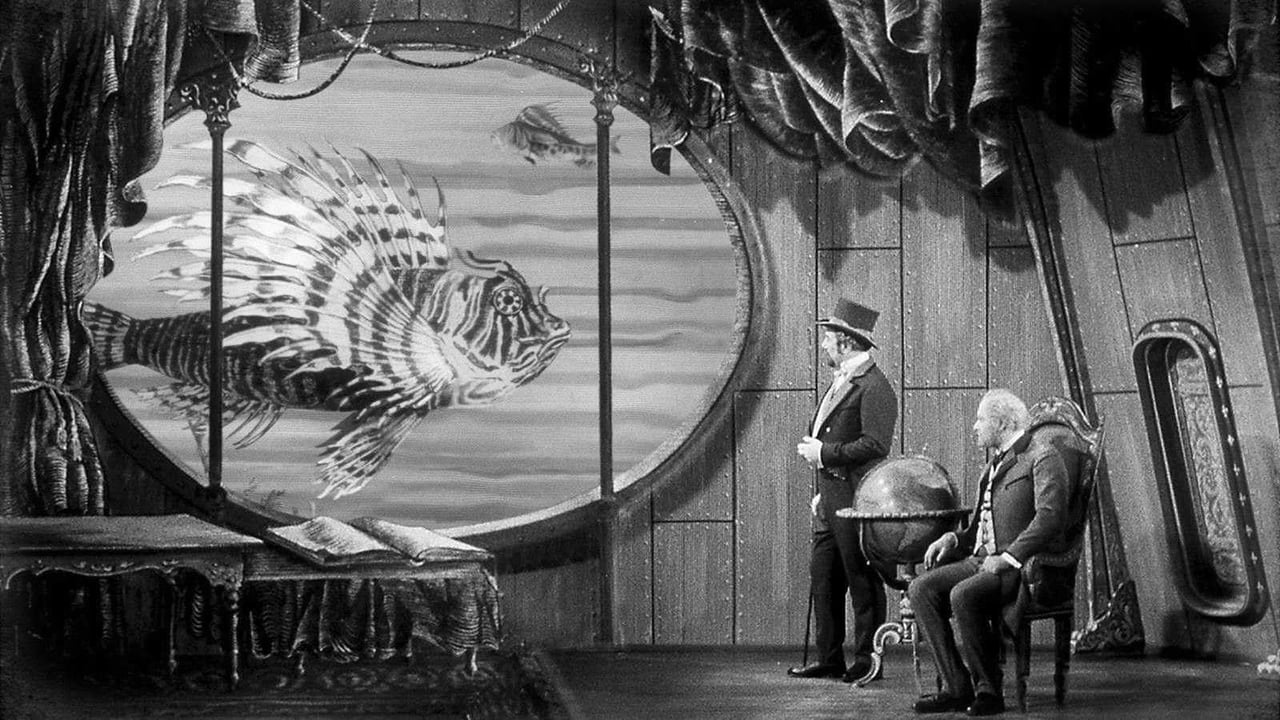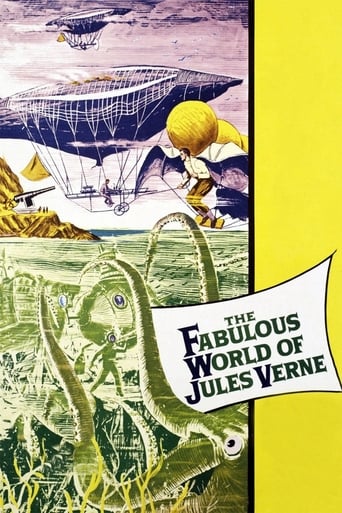

This black and white film is based on several books by Jules Verne but primarily his 1896 book 'Facing the Flag'. The basic hook of this film being the unique approach to the special effects by director Karel Zeman.The plot sees a gang of pirates kidnapping a professor so they can get their hands on his new invention. Said invention being a powerful new weapon combined with special liquid which they want to use for their piracy. The pirates manage to kidnap the professor and one of his assistants and take them to their hidden base (inside a large remote hollow island). There the pirates provide everything the professor needs to build his weapon. In the meantime the assistant manages to get word to the outside world eventually leading to a British fleet arriving to deal with the pirates.The combination of live action and various forms of animation and effects were the way Zeman created his vision. Although this was not the first time he had taken this approach for his work. Zeman's 1955 film 'Journey to the Beginning of Time' also used a combination of live action, animation and hand drawn elements. The animation and effects in question for this film were stop motion animation, matte painting, miniatures, three-dimensional props and texture superimposition. Indeed the visuals in this film are quite astounding to say the least. I reckon most would be amazed to know this film was made back in 1958 as it could easily be a modern movie. Its not too hard to imagine Tim Burton being the director behind this feature with its steampunk imagery. Yes that's right I did say steampunk, this film could well be the first introduction of the popular Victorian steampunk/Gothic subgenre (inspired by 19th century industrialism). If you take the visuals from Disney's 1954 movie '20,000 Leagues Under the Sea', put them in black and white, and then add the artistic style of using parallel lines (almost like cross-hatching with ink) across all props and sets, you have an idea if what to expect here.The stark parallel line imagery was in fact Zeman's attempt at recreating the old Victorian line engravings that were featured in the original Verne novels. This style actually works wonders in giving everything a very detailed and used appearance. The whole world we see in the film looks worn and weather beaten, as opposed to looking shiny and new. A technique we all know has been used effectively by a few directors and their movies in years since. The technique also gives the imagery depth and a grand old fashioned vibe which admittedly predominantly comes from when the film was made. Altogether it makes the whole affair look like a living comicbook or moving picture book.To be honest the film does come across as more of a living comicbook than a movie really. All you get is basically one scene after another showcasing a piece of machinery, or a vehicle, or a landscape etc...Its literally like watching panels in a comicbook one after another. There is very little dialog, sometimes narration, and sometimes nothing other than the moving imagery and the noise it makes. At times its almost like a silent picture but with fantastic visuals. I really can't stress enough how stunning this film looks at times. Sure some of the shots look a bit shaky, some look almost too much like an illustration, and in some the stop motion is pretty jerky. On the flip side some shots with live action elements are remarkable because you can't see the joins! The blend of the actors against moving three-dimensional props and background/foreground mattes, or drawings, is flawless. Overall considering the age of this movie what they achieved is incredible.Of course being a film based on Jules Verne you can't not have underwater sequences with the inevitable attacking giant squid. Its these sequences which mainly make up the most impressive and fantastical visual elements of the film. The imagination shown in these sequences is spectacular and have clearly helped inspire other filmmakers. Watching the various oddly shaped submarines (some with flipper-like paddles) and personal underwater pedal bike things, which the deep sea divers use, is glorious. I could feel my mind being cracked open...letting my imagination escape and run free. Apart from the slightly dated stop motion animation these sequences also highlighted some little errors which were amusing. Such as the divers moving perfectly normally underwater using their weapons normally. Also one sequence where a sub manages to find and pick up the hero from the seabed seemed a bit fortuitous and ludicrous. All in all its still impressive how they managed to convey the deep sea with mere sets, hand drawn props and a slightly wavy blur effect across the whole image.With a story based around pirates, mysterious islands, nautical swashbuckling, Nemo-like machinery and dashing Victorians in uniform, what more could anyone want? Beautifully lavish visuals that have clearly been given tonnes of attention; Zeman seems to have been a perfectionist for sure. The final results are clear to see. The plot may be thin on the ground but for anyone who appreciates the art form of stop motion animation along with ingenious high fantasy imagery, then this is for you. 9/10
... View More***Spoilers ahead*** My late childhood had two cinematographic icons: Star Wars and this film by Czech genius Karel Zeman. A Jules Verne encyclopedia where XIX century illustrations come to life in exquisite black and white photography, combined with stop motion and conventional animation. Verne's spirit of adventure is fully present throughout the film, as well as a very modern questioning on the moral limits of power and advanced technology. In fact, it brings atomic energy into Verne's universe in a very elliptic and elegant way. Also elliptic and elegant is the demise of the villain, with a (probably nuclear) explosion sending his hat flying over the sea. The resolution of the film is symbolic and very satisfactory, something very rare today, when a lot of films don't seem to know how to end themselves.I was fortunate to catch this gem in reruns on local TV in the late 70s: it enhanced my enjoyment of Verne's fiction and of cinema.10 out of 10 for Karel Zeman, under-appreciated master of imagination.
... View MoreThe movie is based on a Jules Verne book I actually have read once, about ten years ago. I remember I liked the book a lot, and this movie does a good job in telling the story. The most important thing in this movie isn't the story, however, but the highly original visual look it has.The visuals are absolutely beautiful, and they are apparently achieved by a clever combination of animated drawings combined with live actors, stop-motion animation and sets that are painted so that they look much like from an animated movie. Combined by Jules Verne's own unique versions of airplanes and submarines and Karel Zeman's good directing results in a very well done and convincing visual style that manages to effectively hold one's attention until the end of the movie.There are some problems as well, one of the underwater scenes at the end takes maybe needlessly lot of time for example, as the story in the first part of the movie is rushed through quite quickly. None of this matters much though since the movie is always highly enjoyable. A gem that deserves to be more well known for today's audiences as well. A recommended movie for the whole family.
... View MoreAn interesting movie based on three of Jules Verne's novels. Considering the special effects and computer enhanced animation of today, this movie stands as an historic marker of cinematic resourcefulness and imagination. Karel Zeman has brought to life the lithographic images of the original Jules Verne texts. this is a must see for classic science fiction and history buffs.I give this movie 9 out of 10. Enjoy!!
... View More